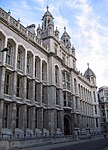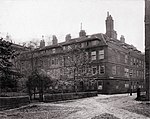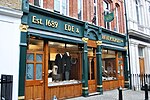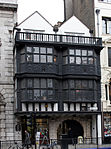Maughan Library

The Maughan Library () is the main university research library of King's College London, forming part of the Strand Campus. A 19th-century neo-Gothic building located on Chancery Lane in the City of London, it was formerly the home to the headquarters of the Public Record Office, known as the "strong-box of the Empire", and was acquired by the university in 2001. Following a £35m renovation designed by Gaunt Francis Architects, the Maughan is the largest new university library in the United Kingdom since World War II.Designed by Sir James Pennethorne and constructed in 1851, with further extensions made between 1868 and 1900, it is a Grade II* listed building. Inside the library is a dodecagonal reading room, inspired by that of the British Museum, and a former medieval chapel, now an exhibition space showcasing the special collections of the library. The library was named in honour of Sir Deryck Maughan, an alumnus of the university.
Excerpt from the Wikipedia article Maughan Library (License: CC BY-SA 3.0, Authors, Images).Maughan Library
Crane Court, City of London
Geographical coordinates (GPS) Address Website External links Nearby Places Show on map
Geographical coordinates (GPS)
| Latitude | Longitude |
|---|---|
| N 51.5153 ° | E -0.1106 ° |
Address
Maughan Library (King's College London)
Crane Court
EC4A 1BR City of London
England, United Kingdom
Open on Google Maps











